-
How does it feel?
If you have ever tasted cocoa powder or nibs, you will know that they are bitter. The tincture has a smell of chocolate with a bittersweet, rich and earthy taste.
-
What can I use it for?
Cacao is a common food item, and can be found in many forms, raw or processed. It can be consumed this way as a nutritive plant, containing plenty of minerals and antioxidants.
It is best to consume it as dark chocolate or as a powder or nibs to get the most nutritional benefit.
Cacao may also be used to elevate mood and energy levels. It contains theobromine and small amounts of caffeine, which are both stimulants to the nervous system.
It also has a reputation as an aphrodisiac, and may support libido.
-
Into the heart of cacao

Cacao has long been used as a food and medicine by the people of Mesoamerica, with archaeological research finding evidence of use as far back as 1000 BCE.
As a native medicine of south America, cacao was traditionally used in sacred practice during ceremony. A Traditionally a deep decoction was made using a paste from the pure cacao nibs, mixed with water. Used in this way in a potent measured dose, cacao is believed to be able to work on the energetic heart, allowing one to access a deep state of transcendence. Whilst Cacao isn’t a psychedelic, it is well understood for its actions upon the mind as a gentle psychoactive and nervine medicine. In ceremony, Cacao has an incredible ability to allow one to enter a meditative space.
Cacao ceremonies have risen in popularity, Many who hold cacao ceremonies follow the traditions of its native land, guiding the use of this gentle yet powerful medicine with honour to its cultural understanding.
Some evidence suggests that it is this positive cultural association with chocolate that is responsible for the elevation of mood, while others are investigating the possible biochemical explanations.
One of the psychoactive compounds in cacao that is thought to be responsible for some of its psyco-spiritual effects is theobromine, as well as the well known cannabinoid- anandamide ‘the bliss molecule’. The word theobromine derives from its botanical name Theobroma cacao, which translates as ‘food of the Gods’. Theobromine is a bitter alkaloid which has been shown to be mildly stimulating as well as mood enhancing. It is also thought to be part of the mechanism of cacao medicine for improving one’s memory and focus.
Cacao also increases the flow of blood and oxygen to the brain. With the combined psychoactive actions of anandamide and theobromine to uplift and enhance one’s state of mine, cacao is also thought to inducing the further induce the release of endorphins and dopamine, our ‘feel-good’ hormones. All of these mechanisms contribute to the enhancing actions of cacao – those that may lead us to exist in a peak state.
One of the mechanisms by which cacao may be understood to have a heart opening effect is by an additional action of theobromine to increase dilation in the blood vessels. This action pays particular attention to the microcirculation of the heart itself. Often the ‘energetic’ uses of herbs can be grasped through the holistic understanding of their pharmacological actions.
-
Traditional uses
 The Olmec, Maya, Zapotec, Mixtec, Toltec and Aztec claimed both nutritional and medicinal benefit from cacao prepared as a beverage. The tree was reportedly used as a source of materials for various objects that were central to daily life.
The Olmec, Maya, Zapotec, Mixtec, Toltec and Aztec claimed both nutritional and medicinal benefit from cacao prepared as a beverage. The tree was reportedly used as a source of materials for various objects that were central to daily life.The Florentine Codex lists over 100 medicinal uses for cocoa. Some of these uses were as a more palatable delivery mechanism for other medicines, and others are with cacao as a main medicinal agent. These remedies are for the spitting-up of blood, stomach complaints, bringing down milk in new mothers, fever, shortness of breath, and more.
In Central America, the seed has been used as a heart and kidney tonic, and to treat the pains of childbirth, fevers and coughs.
Cacao was brought to the Old World in the 16th century, where it was also toted for its medicinal qualities. Eventually, milk was added to the drink to make it more palatable, which led to its commonly known form of confectionery.
-
Traditional actions
Herbal actions describe therapeutic changes that occur in the body in response to taking a herb. These actions are used to express how a herb physiologically influences cells, tissues, organs or systems. Clinical observations are traditionally what have defined these actions: an increase in urine output, diuretic; improved wound healing, vulnerary; or a reduction in fever, antipyretic. These descriptors too have become a means to group herbs by their effects on the body — herbs with a nervine action have become the nervines, herbs with a bitter action are the bitters. Recognising herbs as members of these groups provides a preliminary familiarity with their mechanisms from which to then develop an understanding of their affinities and nuance and discern their clinical significance.
-
Traditional energetic actions
Herbal energetics are the descriptions Herbalists have given to plants, mushrooms, lichens, foods, and some minerals based on the direct experience of how they taste, feel, and work in the body. All traditional health systems use these principles to explain how the environment we live in and absorb, impacts our health. Find out more about traditional energetic actions in our article “An introduction to herbal energetics“.
-
What practitioners say

Nervous system
Chocolate is well known for bringing good feelings to those who consume it, just look at how often it is given as a gift on special occasions! Cacao is stimulating to the nervous system as it contains both caffeine and theobromine.
The caffeine is contained in small amounts, and theobromine is considered a mild stimulant by comparison, so the stimulation that cacao offers is generally considered low. Additionally, many people have positive memories associated with its familiar taste and aroma, and there is ongoing research into the mechanisms of how it improves mood. Thus, cacao can be a fantastic herb to gently elevate mood and energy.
Cacao is an excellent medicine to use to support memory and focus. This works through a combined effect of its cardiovascular actions through improving the microcirculation in the brain whilst also exerting its effects on brain chemistry to positively enhance overall condition.
Cardiovascular system
While stimulating the overall nervous system, cacao also has an effect on the cardiovascular system. It is used in ceremonial settings as a medicine for the spiritual heart. The chemistry of the bean has been shown to be protective of the cardiovascular system, and the consumption of cocoa is linked to healthy cardiovascular parameters.
Although perhaps not a primary cardiovascular remedy, cacao is helpful as part of a formula for the cardiovascular system. Cacao has been shown to have beneficial effects on platelet function, arterial stiffness and endothelial function (the endothelium is a thin membrane that lines the inside of the heart and blood vessels) (11, 12). There is also good reference to cacao having benefit to those with hypertension (13).
However, its stimulating effects and contraindications need to be taken into account when considering including it in a remedy.
Integumentary system (skin)
Cocoa butter is a wonderful ingredient as it is very gentle and is a solid fat at room temperature. It also smells very pleasant. This is a perfect vehicle for adding infused oils and making pessaries, suppositories, creams, and thick body butters. All dry skin and mucous membranes can benefit.
-
Research
 The cardiovascular benefits of the polyphenols found in cacao have been well researched. They have been shown to promote the body’s synthesis of nitric oxide, which promotes vasodilation and thus reduces blood pressure. Nitric oxide prevents leukocyte adhesion, smooth muscle proliferation and platelet aggregation and adhesion. If there is a deficiency in nitric oxide, the risk of atherosclerosis, diabetes mellitus, metabolic syndrome and hypertension increases. A meta-analysis of clinical trials found that chocolate and cocoa ingestion increased vasodilation, lowered blood pressure, and reduced serum insulin levels.
The cardiovascular benefits of the polyphenols found in cacao have been well researched. They have been shown to promote the body’s synthesis of nitric oxide, which promotes vasodilation and thus reduces blood pressure. Nitric oxide prevents leukocyte adhesion, smooth muscle proliferation and platelet aggregation and adhesion. If there is a deficiency in nitric oxide, the risk of atherosclerosis, diabetes mellitus, metabolic syndrome and hypertension increases. A meta-analysis of clinical trials found that chocolate and cocoa ingestion increased vasodilation, lowered blood pressure, and reduced serum insulin levels.A meta-analysis concluded that short-term consumption of dark chocolate lowered LDL cholesterol. In several studies, however, chocolate consumption has had no effect on lipid profiles, or has increased HDL cholesterol.
Cocoa increases cerebral blood flow through these same mechanisms. The phenolic compounds have also been observed to activate cascade pathways that play a role in synaptic function, neuronal growth, memory, and the pathogenesis of neurodegenerative disorders. Cacao also contains N-acylethanolamines which act as cannabinoid mimics, and increase anandamide levels. This may be one of the ways it is responsible for improving mood and sexual arousal. However, some studies have determined that the effect on mood is due to the taste, rather than the chemical constituents.
The antioxidant activity of chocolate is of interest for its potential anti-carcinogenic effects. In vitro and animal studies have demonstrated reduced tumour size and increased chemosensitisation. The antioxidant activity may also contribute to protective benefits for the skin. One study determined that high flavanol chocolate decreased UV-induced erythema (sunburn).
-
Did you know?
Theobroma means “Food of the Gods”.
Additional information
-
Botanical description
The cocoa tree is an evergreen that grows up to 8m (26ft) tall. It has pale brown bark, and a taproot. The tree has dark green leaves that are glossy and oval shaped, up to 35cm long and 8 cm wide. The surface of the leaves is either hairless or covered in scattered star- shaped hairs. The small flowers are yellowish white to pale pink, are grouped together in clusters and arise directly from the trunk. They are produced throughout the year. The flowers are pollinated by midges in the wild. The flowers, after pollination, develop into massive fruits. These are large, pear-shaped, red-yellow seed pods up to 25cm long. It contains up to 50 seeds that are surrounded by a white pulp. These seed pods are harvested multiple times per year. The seed, husk, and oil are all used.
-
Common names
- Cacao
- Cocoa
- Chocolate tree
- Theobroma
- ‘Food of the Gods’
-
Safety
Cacao is safe when used in quantities contained within food. It is important to note that cacao contains natural caffeine and may be unsafe in doses higher than 400 mg per day depending on peoples caffeine tolerance. While most cacao products contain only small amounts of caffeine (approximately 2 mg to 35 mg per serving), one cup of unsweetened, dry cacao powder can contain up to 198 mg of caffeine.
Cacao is safe to use in pregnancy and lactation however, it is important to monitor caffeine intake. Consumption of caffeine in amounts over 200 mg per day are unsafe in pregnancy.
-
Interactions
None known
-
Contraindications
None known
-
Preparations
Cacao is often used as a food to gain its therapeutic benefits. In herbal medicine, cacao can also sometimes be used by herbalists in tincture or powdered forms. Both raw and roasted cacao preparations are used, as they both have medicinal and nutritional benefits.
Raw cacao is often thought to be superior. Raw cacao is not completely unprocessed as it will have been fermented. It is, however, unroasted. Cocoa powder is both fermented and roasted.
Unroasted ‘raw’ cacao contains more vitamins and minerals, more ‘happy compounds,’ and more antioxidants.
-
Dosage
Ceremonial dosage of cacao is thought to be around 42g of raw cacao per person. This is a strong dose that is used to encourage a meditative state and should only be taken on occasion.
-
Plant parts used
Bean (the nibs that come from inside the bean are used). Cacao shells and butter can also be used for food though they are not as medicinal.
-
Constituents
- Anandamide: known as the ‘bliss molecule; for its role in producing the feeling of happiness, anandamide is an endogenous cannabinoid found naturally in cacao and the human brain.
- Alkaloids: caffeine, theobromine, phenylethylamine
- Polyphenols (10%): proanthocyanidins and catechins
- Minerals: potassium, phosphorous, copper, zinc, iron, magnesium
- Fat: cocoa butter (40-50%), oleic acid (33%), palmitic acid (25%), stearic acid (33%)

-
Habitat
Theobroma cacao is native to Mexico, Central America, and Northern South America. It grows in the shade of larger trees in the rain forest, in clumps along riverbanks, where roots may be flooded. It has been introduced as a crop plant in many tropical African and Asian countries. There are three main cultivars; Criollo, Forastero (the most common), and Arriba.
-
Sustainability
 Cacao has not yet been accessed by the IUCN Red List of Threatened Plants. However, it is important to consider fair-trade and sustainability when sourcing medicinal and nutritional products, with cacao this is particularly important.
Cacao has not yet been accessed by the IUCN Red List of Threatened Plants. However, it is important to consider fair-trade and sustainability when sourcing medicinal and nutritional products, with cacao this is particularly important. The cacao industry is a well known for being the cause of vast deforestation in West Africa, particularly in the Ivory Coast. Experts estimate that 70% of the country’s illegal deforestation is related to cacao farming.
Additional to the environmental factors above, the chocolate (cacao) industry has a century-long history of forced and child labor. Children working on cocoa plantations are unavoidably exposed to certain hazards, including dangerous tools, dust, flames or smoke, hazardous chemicals, and/or physically demanding labor such as carrying heavy loads or spending many hours in the sun.
We must all make it our priority to source sustainable and ethical produce, in a bid to support farming methods that show consideration for people and the planet. ‘Ethically sourced’ chocolate means that the chocolate has been grown, farmed, and produced with the environment in mind and that the company has treated the cocoa growers and farmers fairly. When sourcing cacao or chocolate look for products that clearly display USDA organic and fair trade mark certification. This should be clear on its packaging.
-
Quality control
For the medicinal and nutritional benefits of cacao, one must source a quality, organic, raw cacao preparation. Cacao was brought to the Western World in the 16th century. In the West, dairy milk was added, for many centuries chocolate or cocoa was a high value delicacy. Nowadays, the majority of readily available chocolate products, that most of us know and love only contain trace amounts of real cacao. Most over the counter or supermarket chocolate products contain more sugar, dairy and fats than the medicinal bean of cacao.
The process of fermenting and drying the beans is critical in releasing its pigments. The polyphenolic compounds undergo a series of reactions, which alters their overall content in the product. Raw Cacao products will always go through the fermenting and drying process.
Herbal Medicines are often extremely safe to take, however it is important to buy herbal medicines from a reputed supplier. Sometimes herbs bought from unreputable sources are contaminated, adulterated or substituted with incorrect plant matter.
Some important markers for quality to look for would be to look for certified organic labelling, ensuring that the correct scientific/botanical name is used and that suppliers can provide information about the source of ingredients used in the product.
A supplier should be able to tell you where the herbs have come from. There is more space for contamination and adulteration when the supply chain is unknown.
-
How to grow
Growing cacao in the west is not an easy task, this is because cacao is an understory plant of warm rainforests. Growing cacao trees requires mimicking these conditions. Cacao grows successfully in USDA zones 11- 13. However it may be grown under warm and humid conditions in a greenhouse, and will require more vigilant and specialised care.
- To grow from seed, viable cacao seeds must still be retained in the fresh pod, or at least to have been kept moist since their removal from pod. If dried out, they will be unviable.
- Seeds may begin sprouting from the pod. If your seeds have no roots yet, place them between damp paper towels in a warm (80 degrees F + / over 26 C.) area until they begin to root.
- Pot the rooted seeds in individual pots filled with damp seed starter soil. Place the seed vertically with the root end facing down, covering with soil just to the top of the seed.
- For best result, cover the pots with cling film or similar. It is worth placing them on a germination mat to maintain temperature of around 80 f (27 C.). Within 5-10 days, the seed should sprout, remove the wrap and put the seedlings on a partially shaded windowsill or under the end of a grow light.
- Cacao trees should grow on keep the plant damp and at temps between 65-85 degrees F. (18-29 C.) – warmer is better. Fertilize every two weeks from spring through fall.
-
Recipe
Calming Hot Chocolate
Ingredients:
- 1/2 tsp powdered Ashwagandha
- 2 tsp powdered cocoa or cacao
- 1 pinch of nutmeg
- 1/4 tsp vanilla extract
- Add sweetener to taste
Method:
- Blend powder with small amount of hot water to make a paste.
- Add hot milk of choice and stir.
- Enjoy!
Aphrodite’s aphrodisiac tea

This tea reaches deep into the reproductive system, nourishing our procreative and sexual energy. Use it when preparing for a family or for nurturing your love life. For men and women, this elixir feeds sex hormone release, improves egg/sperm quality and enhances orgasmic experiences.
Ingredients:
- Shatavari root 4g
- Ashwagandha root 2g
- Licorice root 2g
- Cinnamon bark 2g
- Milk (any type) 250ml (9fl oz)
- Damiana leaf 2g
- Cacao powder 1 tsp per cup
- Maca root 1 tsp per cup
- Flower pollen ½ tsp per cup
- Vanilla essence a dash per cup
- Honey (or Amaretto) a drop per cup
Makes 2 cups of the most amorous elixir.
Method:
- Put the shatavari, ashwagandha, licorice and cinnamon in a saucepan with the milk and 250ml/9fl oz cold filtered water.
- Cover, bring to the boil and allow to simmer for 15 minutes. Take off the heat and add the damiana leaf.
- Leave to steep for 10 minutes, then strain.
- To each cup, add the cacao, maca, flower pollen, vanilla essence and honey. Then top with the tea and stir.

Bliss of the gods hot chocolate
Theobroma cacao is known to us as cocoa (or once there’s some sugar and at in there, chocolate). Theobroma means ‘food of the gods’ – and with good reason. Try this elixir for an entirely new and extremely decadent experience.
Ingredients:
- Unsweetened chocolate 100g (3.5oz)
- Water or nut milk 100ml (3.5 fl oz)
- Vanilla bean essence 1–2 drops to taste
- Honey to taste
This will serve 2 small cups of bliss-inducing nectar.
Method:
- Melt the chocolate in a bain-marie before stirring in the water or nut milk.
- Add the vanilla bean essence and honey to taste then pour into small coffee cups.
- Play around with this recipe. Add a drop of orange essential oil or some rose water to transform it into
Recipes from Cleanse, Nurture, Restore by Sebastian Pole
-
References
- Rusconi M, Conti A. Theobroma cacao L., the Food of the Gods: a scientific approach beyond myths and claims. Pharmacol Res. 2010;61(1):5-13. doi:10.1016/j.phrs.2009.08.008
- Montagna MT, Diella G, Triggiano F, et al. Chocolate, “Food of the Gods”: History, Science, and Human Health. Int J Environ Res Public Health. 2019;16(24):4960. Published 2019 Dec 6. doi:10.3390/ijerph16244960
- Chevallier A. Encyclopedia of Herbal Medicine. Dorling Kindersley Limited; 2016
- Fahey DM, Miller J. Alcohol and Drugs in North America : A Historical Encyclopedia. Abc-Clio, Llc, An Imprint Of Abc-Clio, Llc; 2013
- Manuchair Ebadi. Pharmacodynamic Basis of Herbal Medicine, Second Edition. Crc Press; 2006.
- Katz DL, Doughty K, Ali A. Cocoa and chocolate in human health and disease. Antioxid Redox Signal. 2011;15(10):2779-2811. doi:10.1089/ars.2010.3697
- Hooper L, Kay C, Abdelhamid A, et al. Effects of chocolate, cocoa, and flavan-3-ols on cardiovascular health: a systematic review and meta-analysis of randomized trials. The American Journal of Clinical Nutrition. 2012;95(3):740-751. doi:10.3945/ajcn.111.023457
- Allen RR, Carson L, Kwik-Uribe C, Evans EM, Erdman JW. Daily Consumption of a Dark Chocolate Containing Flavanols and Added Sterol Esters Affects Cardiovascular Risk Factors in a Normotensive Population with Elevated Cholesterol. The Journal of Nutrition. 2008;138(4):725-731. doi:10.1093/jn/138.4.725
- Macht M, Mueller J. Immediate effects of chocolate on experimentally induced mood states. Appetite. 2007;49(3):667-674. doi:10.1016/j.appet.2007.05.004
- Williams S, Tamburic S, Lally C. Eating chocolate can significantly protect the skin from UV light. Journal of Cosmetic Dermatology. 2009;8(3):169-173. doi:10.1111/j.1473-2165.2009.00448.
- Jafari Azad B, Daneshzad E, Meysamie AP, Koohdani F. Chronic and acute effects of cocoa products intake on arterial stiffness and platelet count and function: A systematic review and dose-response Meta-analysis of randomized clinical trials. Crit Rev Food Sci Nutr. 2021 Feb 4;61(3):357-79.
- Sun Y, Zimmermann D, De Castro CA, Actis-Goretta L. Dose–response relationship between cocoa flavanols and human endothelial function: a systematic review and meta-analysis of randomized trials. Food & function. 2019;10(10):6322-30.
- Desch S, Schmidt J, Kobler D, Sonnabend M, Eitel I, Sareban M, et al. Effect of cocoa products on blood pressure: systematic review and meta-analysis. J Am Hyperten. 2010 Jan 1;23(1):97-103.

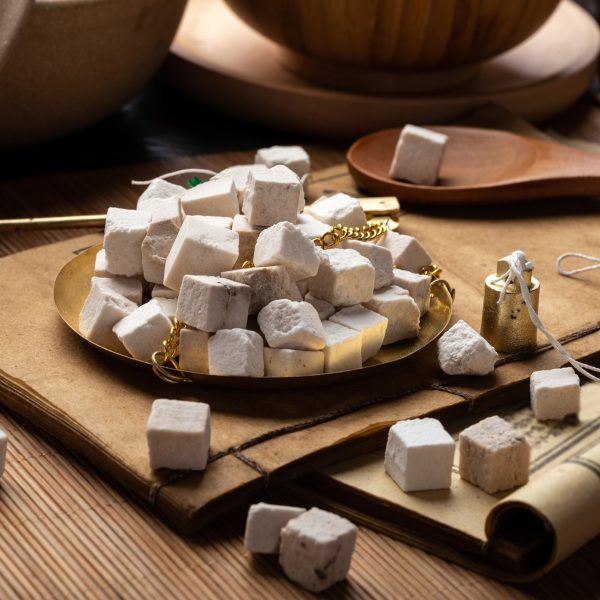
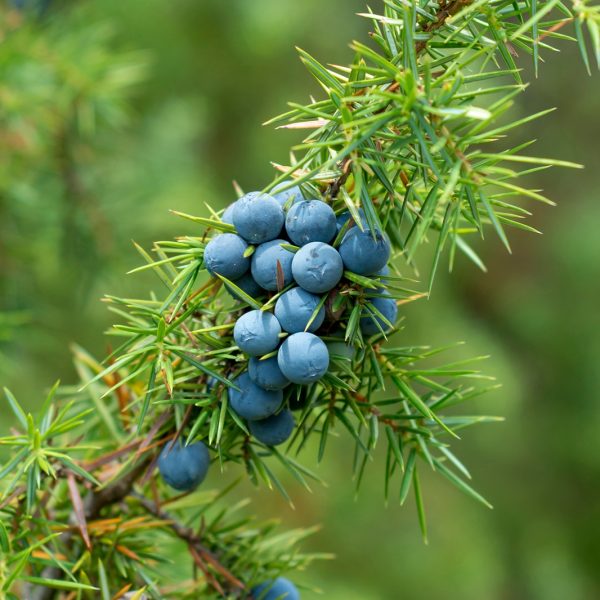












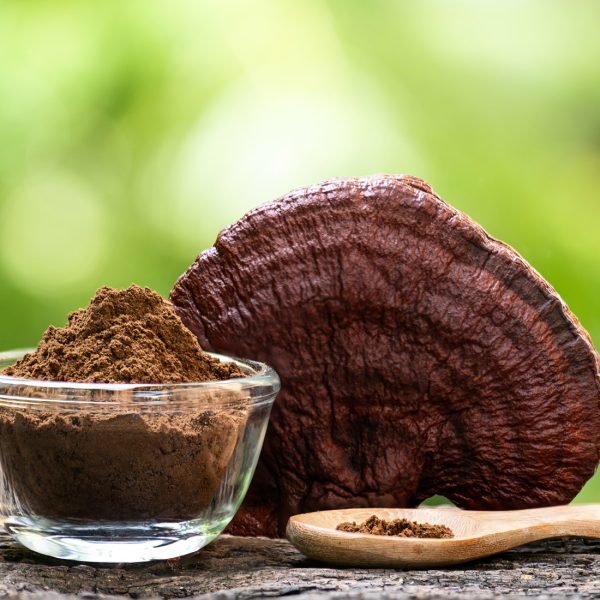

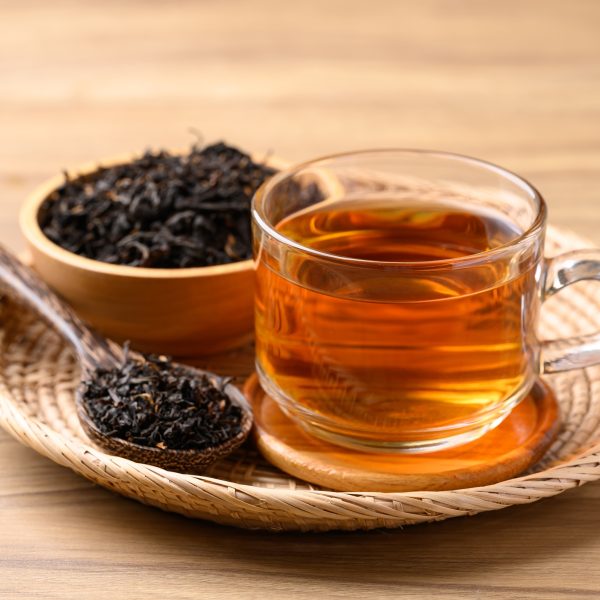
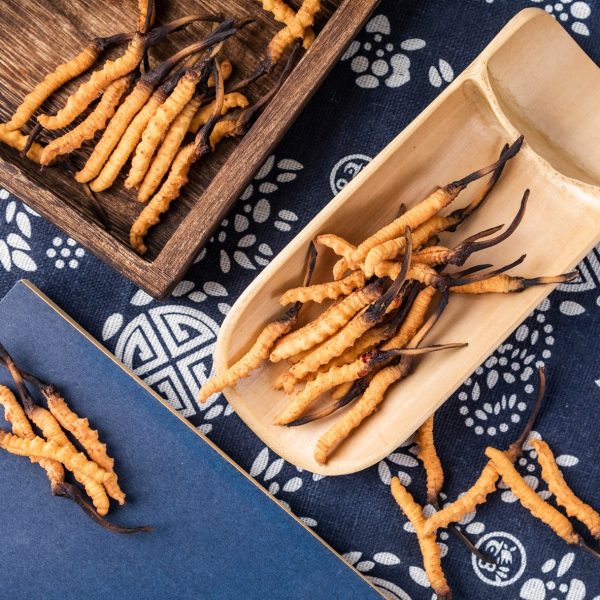











 The Olmec, Maya, Zapotec, Mixtec, Toltec and Aztec claimed both nutritional and medicinal benefit from cacao prepared as a beverage. The tree was reportedly used as a source of materials for various objects that were central to daily life.
The Olmec, Maya, Zapotec, Mixtec, Toltec and Aztec claimed both nutritional and medicinal benefit from cacao prepared as a beverage. The tree was reportedly used as a source of materials for various objects that were central to daily life.
 The cardiovascular benefits of the polyphenols found in cacao have been well researched. They have been shown to promote the body’s synthesis of nitric oxide, which promotes vasodilation and thus reduces blood pressure. Nitric oxide prevents leukocyte adhesion, smooth muscle proliferation and platelet aggregation and adhesion. If there is a deficiency in nitric oxide, the risk of atherosclerosis, diabetes mellitus, metabolic syndrome and hypertension increases. A meta-analysis of clinical trials found that chocolate and cocoa ingestion increased vasodilation, lowered blood pressure, and reduced serum insulin levels.
The cardiovascular benefits of the polyphenols found in cacao have been well researched. They have been shown to promote the body’s synthesis of nitric oxide, which promotes vasodilation and thus reduces blood pressure. Nitric oxide prevents leukocyte adhesion, smooth muscle proliferation and platelet aggregation and adhesion. If there is a deficiency in nitric oxide, the risk of atherosclerosis, diabetes mellitus, metabolic syndrome and hypertension increases. A meta-analysis of clinical trials found that chocolate and cocoa ingestion increased vasodilation, lowered blood pressure, and reduced serum insulin levels. Cacao has not yet been accessed by the IUCN Red List of Threatened Plants. However, it is important to consider fair-trade and sustainability when sourcing medicinal and nutritional products, with cacao this is particularly important.
Cacao has not yet been accessed by the IUCN Red List of Threatened Plants. However, it is important to consider fair-trade and sustainability when sourcing medicinal and nutritional products, with cacao this is particularly important. 







